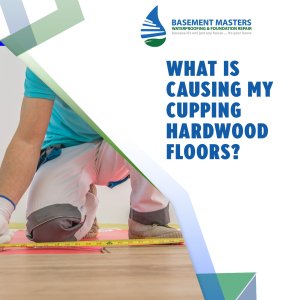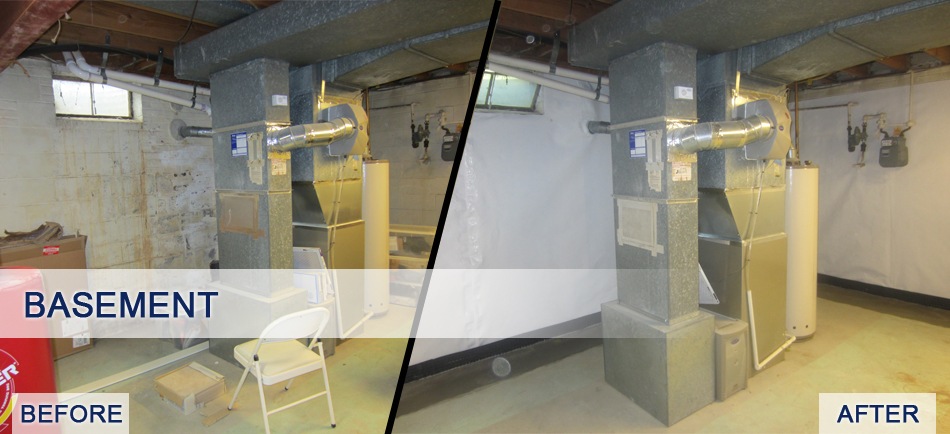- LIVE Response 8am-8pm | Saturdays 9am-5pm
- Get Financing - APPLY NOW!
- HQ: (571) 350-8292
- Maryland: (301) 841-6761
- NOrthern Virginia: (703) 721-7148
 If your hardwood flooring is beginning to cup, it’s essential to know why it’s happening. Here are three reasons why cupping may occur. Also, we’ll talk about how to prevent it and what you can do to fix it if it’s already begun. First, let’s look at the cause of cupping. Wood expands based on the amount of moisture in the room. Too much moisture can cause it to cup. A temperature-controlled room is less likely to suffer this problem. Spilled water can also cause hardwood floors to cup. To prevent this, make sure to let the subfloor dry out completely. Using fans or dehumidifiers can speed up this process. Eventually, the cupping may disappear.
If your hardwood flooring is beginning to cup, it’s essential to know why it’s happening. Here are three reasons why cupping may occur. Also, we’ll talk about how to prevent it and what you can do to fix it if it’s already begun. First, let’s look at the cause of cupping. Wood expands based on the amount of moisture in the room. Too much moisture can cause it to cup. A temperature-controlled room is less likely to suffer this problem. Spilled water can also cause hardwood floors to cup. To prevent this, make sure to let the subfloor dry out completely. Using fans or dehumidifiers can speed up this process. Eventually, the cupping may disappear.
Hardwood cupping can be an unwelcome occurrence. In humid summer months, this phenomenon may occur. Luckily, cupping is often preventable. To avoid this from happening, control the relative humidity in your home. Use a dehumidifier or run an air conditioner on hot days to lower the humidity level. Also, use less water while mopping your floors. Here are some tips to avoid hardwood cupping.
Moisture is the primary cause of cupping. Excessive or extra moisture in a room causes boards to swell, causing the edges to curve upward. Even floors that have been installed perfectly can suffer from cupping. However, you can reverse this condition by addressing the cause. Use a wood moisture meter to determine whether moisture problems are the cause of cupping. If you suspect that your floorboards are absorbing excessive moisture, try a new flooring.
Another cause of cupping is extreme changes in humidity. Extreme changes in humidity can make your hardwood floor look uneven and ugly. Because wood tends to respond to moisture imbalance, it will try to match its internal moisture content with the moisture in the air. High humidity can cause wood floors to expand, while low humidity will shrink. Remember, humidity levels fluctuate throughout the year, so this type of cupping is less noticeable and may even correct itself once the season changes.
In any climate, excessive moisture can lead to cupping. Excessive moisture in a crawl space can result in structural damage and health risks. To prevent cupping, contact GLS Engineering & Testing to have your hardwood floors evaluated by a professional. They can help you plan a realistic moisture control strategy. You’ll be glad you did. And remember, the best way to prevent cupping is to make sure your floors are properly installed.
What causes hardwood floors to start cupping? Cupping is caused by a buildup of moisture, most often from overflowing dishwashers, overflowing refrigerators, and plumbing leaks. To repair the floor yourself, first determine where the water is coming from. A moisture meter is an essential tool for this task. You can also check your floor with a moisture meter if it shows any signs of over-humidity.
Humidity plays a big role in hardwood floor maintenance, and the temperature of your home is important. Because hardwood absorbs moisture from the air, seasonal changes in humidity can cause your floors to cup. You may want to consider having your hardwood floors professionally installed to prevent this problem. Then, you can rest assured that you’re doing everything possible to keep your floors looking beautiful. But if you’re not sure how to fix this issue, keep reading!
The best solution for this problem is to find the cause. If you have a basement, for example, or an extremely humid living area, the moisture from the humidity can damage your floor. Using a dehumidifier will help reduce the humidity level in that area. Running your air conditioning throughout the summer months can also help with cupping. Make sure to avoid sanding, as it may cause more damage than good.
You can easily repair minor cupping if you are able to identify the cause. Moisture in your home is the main cause of cupping. You can use a dehumidifier to remove excess moisture from the wood pores. You can also use a moisture meter to check the humidity level in the area where you’ve discovered cupping. You may even want to invest in a moisture meter to monitor the humidity levels in your home and make sure your hardwood floor is dry.
A common cause of cupping in hardwood floors is moisture. While leaks are an obvious culprit, spills can also cause moisture in the wood. Even moisture from the outside can cause moisture in your hardwood. To help prevent cupping, monitor the relative humidity in your home. If it’s higher than 50%, run your air conditioner or turn off your HRV system. Then, check your floors regularly for signs of cupping.
If you notice your hardwood floor has cupped, it may be a sign that moisture is leaking from a leak in your home or from a nearby building. While the problem may improve over time, you may need to refinish your floor. You may need to sand and recoat it, or you can refinish it, but do not sand it until the moisture has gotten out.
If you’ve already installed hardwood floors, check the moisture content of your subfloor. If your house is located at the bottom of a slope, the moisture content may be high and contribute to cupping. If you have a home with a subfloor that is moist, make sure it has radiant heat to help the wood settle. This can also remove moisture from the subfloor, helping your floors last longer.
Depending on the climate you live in, cupping in hardwood floors can be prevented by installing them in rooms with the same humidity levels as the surrounding area. When you install your hardwood floors, make sure to set your HVAC system for a couple of weeks so that the house acclimates. This will prevent excess moisture from penetrating the wood and causing a cupping issue later. Keeping your HVAC system running and addressing leaks will also help prevent cupping in hardwood floors.
If you’re considering a new hardwood floor installation, you may be wondering, “Is there a fix for cupping hardwood floors?” The good news is that there is a fix! It’s as easy as fixing the underlying cause of cupping. It’s important to understand how wood works and how it responds to humidity levels. In general, humidity is the root cause of cupping. To prevent this problem, keep your relative humidity under 50%. You can also keep your air conditioner running and use a dehumidifier to help control humidity levels.
The reason that hardwood flooring cups is because of excess moisture. In humid climates, the boards expand or contract. Too much moisture in a room causes wood to cup and expand. Temperature-controlled rooms will not experience this problem. Water spills can also cause cupping. Before beginning any repair work, ensure that the subfloor is completely dry. A dehumidifier or fan can speed up the drying process. Once the wood has cured itself, you may be able to install new hardwood flooring without any more cupping.
Excess moisture can also cause cupping in hardwood floors. Excess moisture causes wood to expand and contract, resulting in uneven floors and buckled flooring. In addition to the visual issues, a cupping floor can be dangerous for the structure of your home. A cupped floor can lead to gaps between floorboards and cause damage to the subfloor. If you’ve noticed that your wood flooring has cupped, you should take steps to repair it.
If you’re experiencing cupping on your hardwood floor, you may have an underlying moisture problem. If you notice a hump in the center, chances are that the floorboards are lifting themselves from the subfloor. If you’re not sure, you can check for signs of buckling by observing cracks between boards or cupping edges on the floor. If you’re experiencing cupping in your floor, you should address the problem immediately so that you don’t risk further damage to your floor.
When you notice that your hardwood floors are beginning to cup, you should seek out professional interior waterproofing help. You should first identify the source of the problem. By simply drying the floor, you are ignoring the problem and risking further damage. You should also address the source of the water damage by installing a dehumidifier or drying treatment to restore normal humidity levels. Otherwise, you will only be putting off the problem for much longer.
Cupping wood floors usually occurs after water seeps into the wood and expands. This expansion causes the edges to rise higher than the center, a condition known as cupping. When your floor continues to cup, it may cause structural damage. It could even cause gaps between floorboards. Also, if the wood continues to expand and contract, it will begin to damage the subfloor underneath. To solve this issue, you should look for interior waterproofing help.
Another source of cupping wood floors is humidity. Humidity changes from season to season, and hardwood floors will attempt to match the air moisture. If the humidity levels fluctuate, the cupping will be less severe and may even correct itself. Nevertheless, you should take care of the cupping problem as soon as you notice it. If it happens again, don’t wait too long to contact an interior waterproofing service.
It is essential to understand that moisture has the ability to ruin a home. If you don’t get the right help, the problem will only get worse. To solve the problem, you must find the source of the moisture, and act quickly. Once you know what caused it, you should move all wet things outside the home or to another room. If you can’t move the wet furniture to a waterproof floor, you should place a piece of plastic between the furniture and the floor.

Take A Look For Yourself!
Visit our Before and After gallery for shots of completed projects.We are glad to help increase the quality of life in your home!